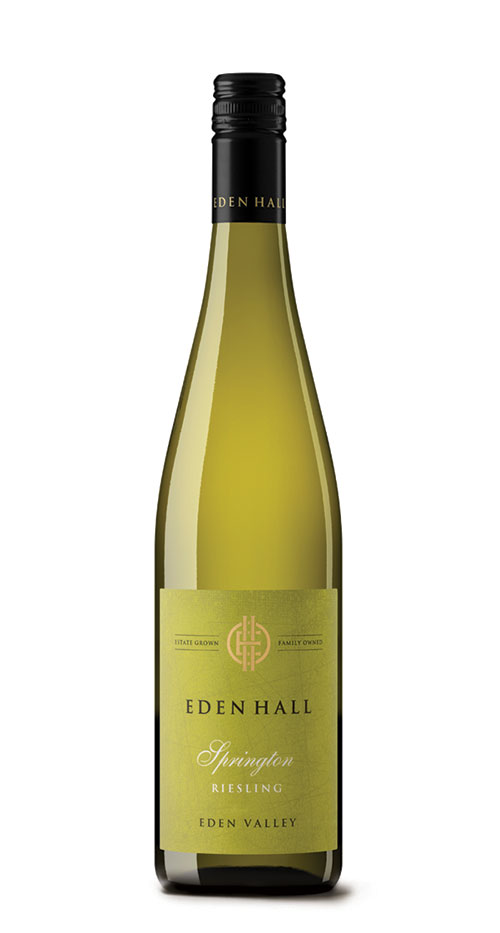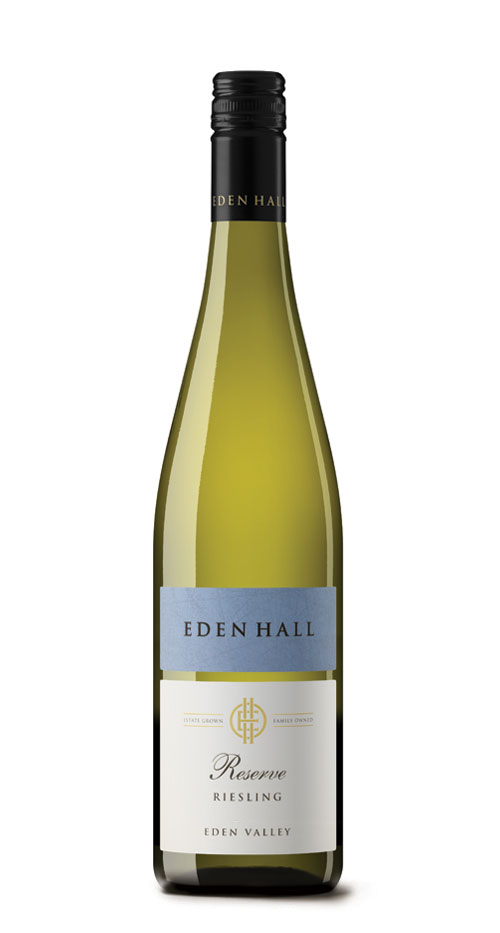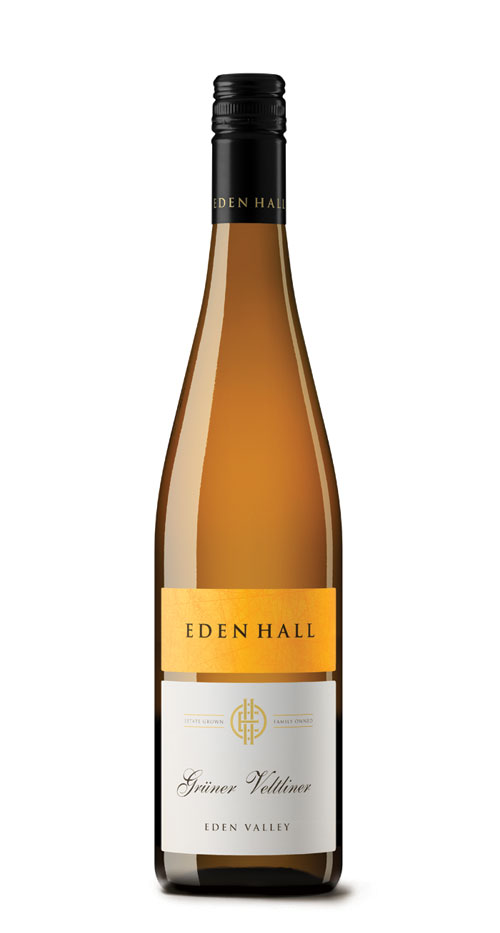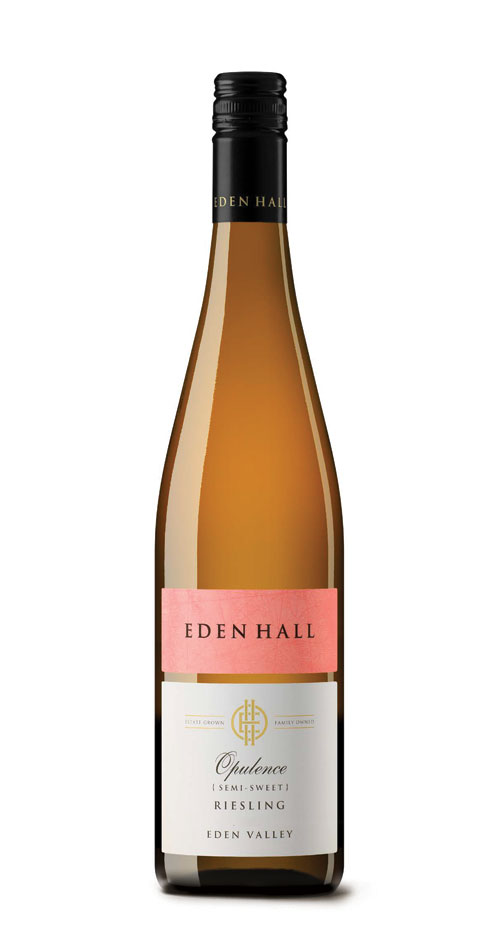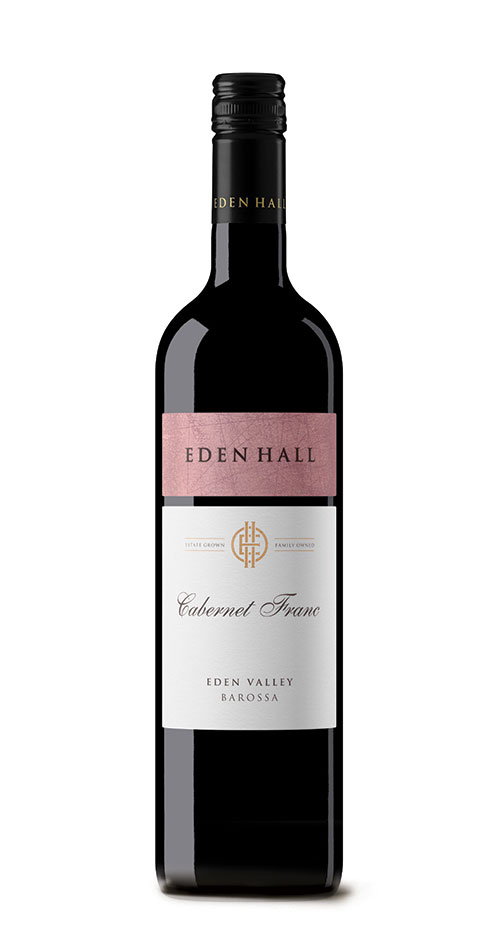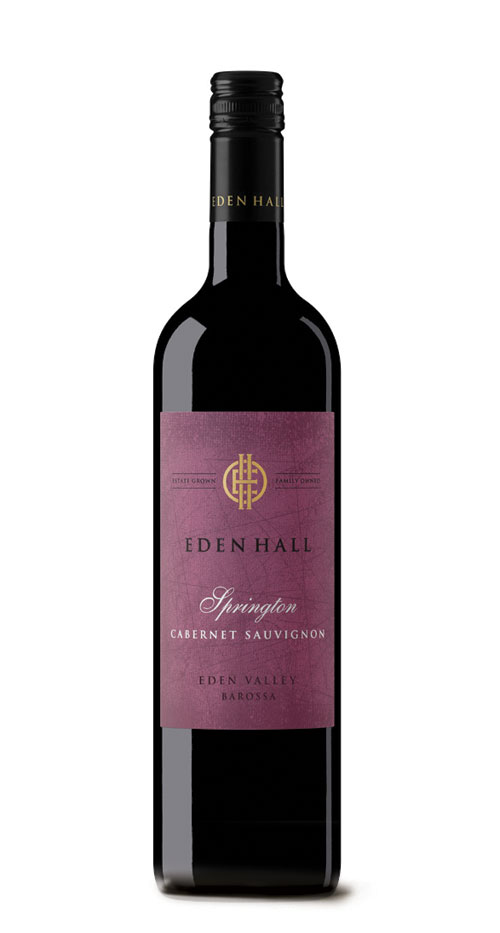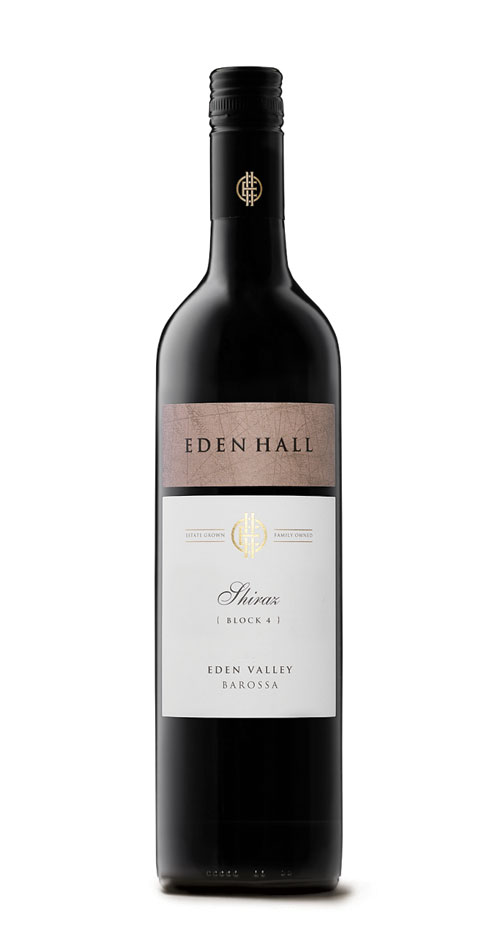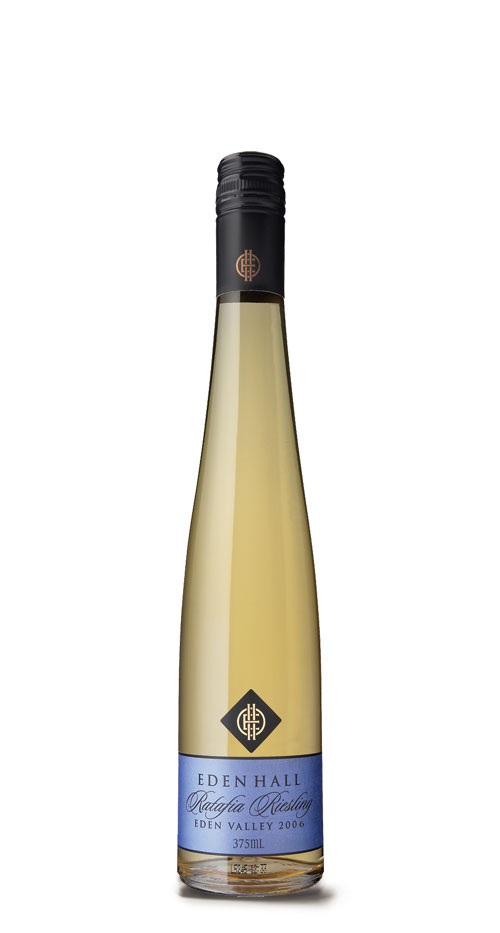Single Vineyard, Eden Valley Wines of elegance and finesse
ESTATE GROWN . FAMILY OWNED
First, select the very best parcels of fruit from the hand tended vineyard. Then give a free reign to a winemaking team that benefits from the wisdom and experience that comes with a lifetime spent living and working in the Eden Valley.
Finally, ensure the packaging befits the product – a striking collection of labels and taint free closures that confirm the super premium quality within each bottle and carton.
We are proud to offer our handcrafted Eden Hall wines displaying the best possible characteristics of the Eden Valley with intensity of flavour, finesse and elegance.
Vintage Reports
2025 to 2015
Yields were low, but quality was exceptional, with Riesling, Shiraz and Cabernet Sauvignon standouts.
Winter rainfall in 2023 was below average, and spring was even drier so we entered the 2024 growing season with thirsty soil profiles.
The vines struggled to get going and to add insult to injury were hit with a severe frost on 22 October and further frosts into early November that took out several blocks and ultimately resulted in a total yield of only 50% of expected. Thankfully, there were good rains in November and December, then again in early January that saw the vines pick up and move into their ripening phase. It was dry and mostly cool from then on, and harvest commenced with Riesling on 7 March and finished with Cabernet on 11April.
Whilst yields were low, mainly owing to the late frosts, quality was exceptional across the board, with Riesling a standout.
We entered the 2023 growing season with above-average soil moisture and got off to a good start.
This was followed by a cool, wet spring that fortunately had a positive effect on vine growth resulting in the development of long loose bunches with good air flow that minimised disease pressure.
Thankfully, a mild summer provided a long, cool ripening period, and despite our concerns, a relatively late vintage progressed at a relaxed pace, with reasonably good yields, and importantly, excellent quality.
Winter rainfall in 2021 was near average for the second year running so that again soils filled to saturation point. Indeed there were follow up rains in October and November which meant that we did not have to tap into the limited reserves in our dam until December. An extreme weather event on 28 October, including hail, caused damage across the Barossa and Eden Valley, but somehow we were largely spared. Frost events had less impact compared to previous years and late flowering avoided the windier conditions leading to good fruit set. The summer months were mild with welcome rain in late January providing ideal ripening conditions. Humid and cool conditions leading into vintage promoted patches of botrytis infection in Block 8 Riesling – this was used to our advantage in making a sweet wine.
Overall, vintage was well paced starting on 9 March with Riesling from block 8 and finishing on the 3 May with Cabernet Sauvignon from block 6.
The 2022 vintage delivered well balanced yields and is a step up in quality from bits highly credentialed predecessor.
Winter rainfall following the 2020 vintage was near average for the first time in three years so that soils filled to saturation point, but the spaced-out nature of the rainfall and drier than average July meant there was minimal run off for our dam. An anxious period followed with dry conditions for the third year running, hand in hand with frequent, moderate frosts in October and November. Despite frosts and wind, fruit set was good and the trajectory was for a much greater yield than prior vintages. Accordingly adjustments were made in the vineyard with shoot and bunch thinning in some blocks to ensure quality.
Summer was dry, but cool. Thankfully there were timely rainfall events during the growing season and importantly a crucial rain of 21mm at the start of veraison on 7 February providing enough moisture for the vines to adequately ripen their fruit through to an extended harvest that started on 13th March with Riesling and finished with Cabernet and Shiraz on 30th April. In summary the 2021 vintage shows great quality and a very welcome return to worthwhile yields across all varieties that will translate to excellent wines on the table and in the cellar. 2021, one to remember!
Following 2019 when you might have thought that things couldn’t possibly get any tougher, along came the 2020 growing season! Dry, frequent frosts, followed by winds that affected flowering and fruit set.
December was hot and catastrophic bushfires engulfed the nearby Adelaide Hills, Kangaroo Island and vast tracts of land in the eastern states. Thankfully the ripening period was unusually mild and a rain event at the start of February breathed some life into the struggling vines that saw them through to harvest.
Our lowest yield on record, but exceptional quality and not a hint of smoke taint. The 2020 Vintage will be remembered for many things, not the least of which was its finish in the weird and uncertain times accompanying the advent of the COVID-19 Pandemic.
In a word, the 2019 growing season was – dry!
It started off dry and stayed that way. Mother nature challenged the vines with more frosts than usual and a windy flowering period that disturbed fruit set. To top it all off she threw in a hailstorm on 22 November! Thankfully the punch-drunk vines were given a small reprieve with no extreme temperatures in the ripening period and were put out of their misery with an early, compressed harvest beginning with the whites on 7th March and finishing with Shiraz on 22nd March.
The 2019 vintage resulted in our lowest yield on record, but outstanding quality wines across all varieties. Whenever you can find it, grab any 2019 wine from the Barossa/Eden Valley!
The 2018 growing season started off well following above average winter rainfall, but it was dry and warm after that. Owing to later veraison in the Eden Valley as opposed to the Barossa floor, the hot spell in January and February did not cause any concern to the Avon Brae vineyard and the vines took it all comfortably in their stride.
Thankfully, Mother Nature did not dish out any adverse events this year and harvest started in March with the whites, and finished on 19 April with the last of the Cabernet blocks. Yields were above average across the board, but quality was good, with Riesling a standout as usual.
In stark contrast to the previous year, the 2017 growing season followed a long wet winter that replenished soil water profiles and a wet, windy September. A mild summer included regular rainfall events ensuring a long, cool ripening period. Bunch weights were increased leading to yield levels getting back to average and a harvest schedule also getting back to “normal” with Riesling coming off at the end of March and into April whilst the reds were picked in May.
2017 Eden Valley Riesling will be a stand-out and the reds aromatic and elegant as usual, but not as big.
In a word, the 2016 growing season was dry! Rainfall was well below average through winter and spring and like 2015 there were many late season frosts – indeed at Avon Brae we had our latest frost in living memory on 12 December 2015. Again, like the two previous vintages, the region was devastated by a catastrophic bushfire – this time the Pinery fire burned 86,000 hectares of farming land adjacent to the Barossa from 25 November to 2 December and again the Eden Valley thankfully escaped unscathed which allowed us to lend a hand to our relatives at Freeling. December and early January were warm, but rains at the end of January and early March were god sent and along with milder weather we eventually realised ideal ripening conditions leading up to vintage.
Harvest started early with some of the Riesling on 26 February and this year the Grüner Veltliner was late, coinciding with the last of the reds coming off in early April. The yields were above average for the whites and below average for the reds, but high quality across all varieties. It seems that the Eden Valley is able to handle almost anything that nature throws it way, and still come out on top!
The 2015 growing season started well with above average early winter rains that filled the soils and dams, however it was dry from then on. Temperatures were above average in spring allowing the vines to get away to a good healthy start.
The dry weather meant that when the night time temperature dipped there were again late season frosts, but thankfully not damaging at Avon Brae. Summer was generally mild with the exception of a few days of extreme heat after New Year that were associated with the outbreak of the Sampson Flat bushfires in the Adelaide Hills on 2 January. The damaging fires burned for 7 days in the Adelaide Hills and despite some anxious days, the fires were far enough away that they had no impact on the Eden Valley.
Thirty millimetres of rain on 8 January helped quell the fires and refreshed the vines. Near perfect ripening conditions followed leading into an earlier than usual harvest. The Gruner Veltliner was first to come off, handpicked by our extended family, Riesling and Viognier were next with it all picked by the second week of March. Shiraz and Cabernet ripened at the same time this year and were harvested around Easter.
2015 was a cracking vintage in pace, yield, and above all quality and is likely to surpass the 2002 vintage in greatness.
2014 to 2004
The 2014 growing season was one of the wackiest in living memory!
Following the low yielding 2013 vintage the season started well, but the first threat came from unseasonal late frosts. Summer was the hottest on record with 13 days recording a maximum of over 40ºC.
During this period the devastating Eden Valley bushfire ignited on 17 January adjacent the Eden Valley Township, but thankfully (for us), the winds took it in an opposite direction to the Avon Brae Vineyard. The hottest ever summer was followed by the wettest day since 1969 with more than 100 mm of rain falling on Valentine’s Day.
Whilst some rain would have been welcome, too much of a good thing caused further loss of crop through splitting of fruit. Harvest was then on in earnest beginning with some Riesling blocks on 26 February and finishing earlier than usual with Cabernet and Shiraz on 6 April. A rollercoaster year that ultimately produced good fruit, but very low yields.
The 2013 vintage was early following a dry winter, spring and summer in the Eden Valley. Whilst January was a little cooler than average, the summer was generally hot and dry, but thankfully there were only a few heat spikes into the forties.
Yields again were low across all varieties apart from Riesling which didn’t seem too fazed by the conditions, and yet again confirmed that Eden Valley is its natural home.
The 2012 growing season followed a very wet period that included the previous summer and autumn of 2011. The winter was colder with below average rainfall followed by a mild to warm spring that was also fairly dry. Flowering was patchy such that the red grapes set a very low crop. Summer was also unusually mild with below average temperatures and no extreme weather events.
Harvest began earlier in 2012 with Riesling producing balanced moderate crops and healthy canopies producing outstanding fruit. No Riesling was lost to disease in the 2012 vintage which was an excellent result following the difficult 2011 season. Indeed the Riesling has just gone into bottle (23 May 2012) and looks likely to raise the bar on the lofty standards that Eden Hall Riesling has already set in the past.
There was a considerable gap before the red harvest began even though the yield was less than a third of last year’s. Fortunately the payback for the exceedingly low cropping level was made in the form of exceptional quality. The standouts were the Block 1 Cabernet Sauvignon, Block 4 Shiraz and Block 13 Cabernet Franc.
All in all an outstanding vintage that will rival 2002 for greatness.
The 2011 vintage was challenging on many levels, starting with a wetter than average winter and the coldest for 13 years.
The drought was broken across the country with floods in the eastern states, cyclonic monsoonal activity in the north promoting unseasonal rains across the south and Summer was generally mild. Rain, high humidity and mild temperatures continued through March, making it one of the wettest in nearly 30 years. While this affected ripening it allowed for early flavour development and maintained excellent levels of acidity. The humid, wet conditions encouraged the growth of botrytis, making hand-selected fruit essential.
Despite the difficult conditions, the flavours in the Avon Brae vineyard white wines, in particular Riesling, were striking. We managed to rescue a parcel of quality Cabernet that will meet the Eden Hall requirements and have processed a small parcel of Shiraz co-fermented with Viognier that may see a departure in style from previous vintages – think Côte-Rôtie and dream of the Rhône … while it may be a smaller vintage for us we have maintained our high quality rating.
This year promised much and began with excellent late winter and spring rainfall – the best for the past five years – that thankfully replenished the parched soils. Warm conditions in early spring lead to an early bud burst, but a cool October kept the vines growing slowly. A heat spike in November generated leaf and canopy growth, ensuring the Avon Brae vineyard looked ‘picture perfect’ by the end of the month. This early heat also impacted upon fruit set, thereby reducing crop levels across the board.
In early 2010, the mild conditions ensured that vintage commenced slightly earlier than average, characterised by healthy vines with below average yields. The Riesling vines were well set, with the cold nights causing the vines to hold their natural acid and delicate aromatics, while the sunny days meant flavour and sugar increased steadily. Now in bottle, the 2010 Eden Hall Riesling is already displaying alluring floral and kaffir lime aromas, stunning balance, mouth watering acidity and lingering fruit weight – this could be the best release from our famed Avon Brae vines yet!
Shiraz and Cabernet Sauvignon were beautifully balanced with strong colours and textbook Eden Valley flavours. An even ripening period saw the Avon Brae vineyard produce distinctive Shiraz and Cabernet based wines of impeccable balance, freshness, varietal character and fruit purity.
The 2009 vintage was preceded by another drought winter, with 399mm rainfall in Eden Valley for the year, and one of the coldest.
December didn’t record any days over 32oC, while January tended to warm to hot with a couple of heat spikes into the high 30s and low 40s. Late January brought a record six days over 40oC, causing significant vine stress, exacerbated by the lack of sub soil moisture, followed by another week of extreme hot weather.
Subsequent weather was mild and dry and from March 1 moved into autumn mode, perfect ripening weather. A strong change in early March brought a general rain across the state, which helped the vines pull through from the heat.
The 2007 vintage proved to be a year of higher than expected quality, but with dramatically reduced yields in the Eden Valley.
We received less than half the expected Winter rainfall and the lack of sub-soil moisture ensured a reduction in yields in the vicinity of 50%. Brief heat waves occurred during January; otherwise it was mild and dry.
At the end of January a tropical air mass connected with a cold front to bring good rains to the agricultural areas of South Australia, with flooding up north. The 70mm rainfall fell steadily over four days, coinciding with veraison, which freshened up the vine canopy to assist with ripening the fruit for harvest. February was recorded as the hottest for 100 years, which brought the already reduced crop to an earlier ripening phase.
The 2006 vintage was characterised by high to excellent fruit quality but with only average yields in the Eden Valley. Winter and spring rains were some of the best for years in the lead up to flowering in early summer, although some varieties, such as Riesling and Shiraz, suffered more than others from poor fruit set.
The summer was mild with southerly winds, reminiscent of 2002. Brief heat waves occurred in late January and mid-February but were early enough not to affect quality, with only minor sunburn on exposed fruit. Mild dry Autumn conditions allowed for the development of wonderfully balanced fruit quality and flavours.
The 2005 vintage was characterised by a warm autumn that led to an early harvest of above average yields. There is no doubting the impeccable quality of the 2005 vintage, surely rated second only to the iconic 2002, in which the cornerstone varietals for Eden Valley, Riesling and Shiraz, achieved near perfect fruit ripeness.
The 2004 vintage was always destined to create wines that would blossom in the cellar to become Australian classics.
Strong winter rainfall and a wet and warm spring ensured that vines grew vigorously and set a healthy, full crop of fruit. After a hot December, the weather became mild and the vines thrived with little heat stress to contend with.
A searing heat wave in February was countered by the thick leaf canopy provided by the Avon Brae vines, ensuring minimal damage from sunburn.
March provided warm days and cold nights, ensuring almost perfect fruit ripening conditions. The 2004 Eden Hall vintage produced elegant, fruit driven wines with perfect aging potential.
